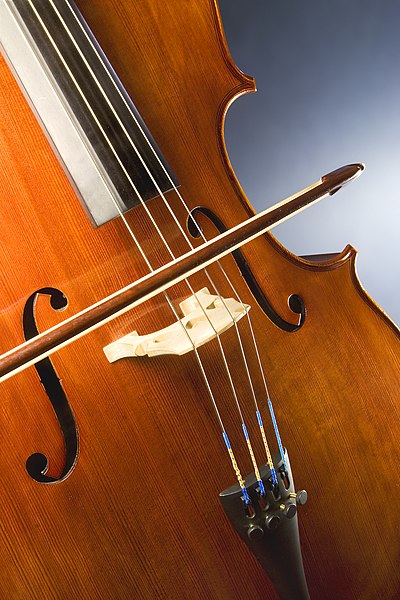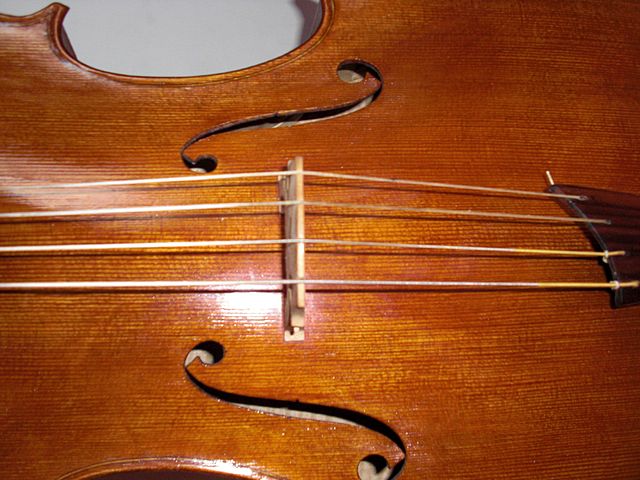The six Cello Suites, BWV 1007–1012, are suites for unaccompanied cello by Johann Sebastian Bach (1685–1750). They are some of the most frequently performed solo compositions ever written for cello. Bach most likely composed them during the period 1717–1723, when he served as Kapellmeister in Köthen. The title given on the cover of the Anna Magdalena Bach manuscript was Suites à Violoncello Solo senza Basso.
Violoncello da spalla
Page from a facsimile of A. M. Bach's manuscript
The cello ( CHEL-oh), or violoncello ( VY-ə-lən-CHEL-oh, Italian pronunciation: [vjolonˈtʃɛllo]), is a bowed (sometimes plucked and occasionally hit) string instrument of the violin family. Its four strings are usually tuned in perfect fifths: from low to high, C2, G2, D3 and A3. The viola's four strings are each an octave higher. Music for the cello is generally written in the bass clef, with tenor clef, and treble clef used for higher-range passages.
Cello close-up
Cello close-up with a bow.
A baroque cello strung with gut strings. Note the absence of fine-tuning pins on the tailpiece.
Josephine van Lier plays a violoncello piccolo, a five-string variant of the Baroque cello, during a recording session of Bach's 6th Cello Suite.






